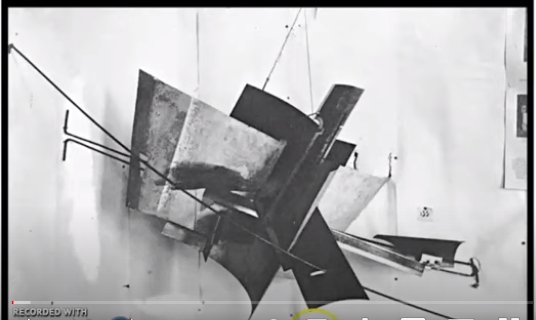Borne As An Artistic Movement Around 1919, Russian Constructivism Proposed The Ideology Of “Production Art”, That Is, Art With A Social Meaning And Practical Purpose. This Above Image Shows =>
…One form of => Constructivism was an art movement that began in Russia around 1915 and lasted until about 1930. It was characterized by abstract and austere art that aimed to reflect modern industrial society and urban space. Constructivist artists rejected decorative stylization in favor of assembling materials industrially. Leading artists in the movement included Vladimir Tatlin, Alexander Rodchenko, Varvara Stepanova, and Lyubov Popova. They explored a new language of geometry, creating angular sculptures from scraps of industrial materials.
The Above Image Shows Some Of The Characteristics Of The 1920’s “German Constructivism Movement”. This Image, Is Talen From A You Tube “Creatine Art History” Presentation By Observant Mind, Who Says =>
…By 1915, Russian avant-garde had pioneered entirely new approaches to arts in three dimensions. Today we have the phrase think outside the box. They were so far outside the box they tore up the box, put it in the recycling bin. Tahleen was the first great innovator, using industrial materials suspended at the corner of the wall the title of this series shows us how innovative his thinking was. It is called a “corner counter relief” because it is suspended in the corner of the room. Think about it. The corner is formed from the intersection of two planes. It's the angle that marks the third dimension arising from the meeting of two-dimensional planes a counter relief [and] refers to a sculptural process between two and three dimensions where a carving … a casting or an embossed design … is sunk below the main surface area. [
